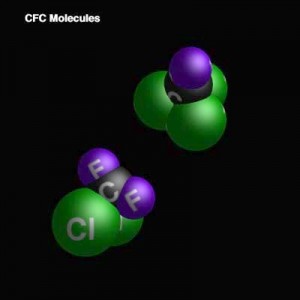
Chlorofluorocarbon, also known as CFC, is a compound containing carbon, chlorine, and fluoride. It is a byproduct of two gases called methane and ethane. A common subclass is the hydrochlorofluorocarbons (HCFCs) which contain hydrogen as well.
Fact 1. CFCs were developed in the 1930s as safe, non-toxic, and non-flammable alternatives to dangerous chemicals such as ammonia.
Fact 2. Uses of CFCs in manufacturing include: aerosol sprays, blowing agents for foams, solvents, and refrigerants.
Fact 3. Historically, in the late 1800s and early 1900s, toxic gases such as ammonia, methyl chloride, and sulphur dioxide were used as refrigerants. Due to the ill effects of these chemicals, a less toxic replacement was required. Collaborative efforts between Frigidaire, General Motors, and DuPont brought CFCs into the picture. In 1928, Thomas Midgley, Jr. of General Motors was responsible for the creation of CFCs.
Fact 4. Â CFCs are safe for applications in the lower atmosphere. However, in the upper atmosphere, CFCs undergo a significant reaction including the destruction of the ozone layer in the stratosphere.
Fact 5. Â The demand for CFCs has been accommodated by the recycling and reuse of the existing stock of CFCs. The other alternative option has been the introduction of substitutes such as halocarbon-free fluids, water, and diluted citric acids.
Fact 6. In the late 1970s, due to the damage to the ozone layer, alternative options to CFCs have been introduced. This includes hydrochlorofluorocarbons (HCFCs) which are noted to be less stable and thus disintegrate before reaching the ozone layer
Fact 7. All replacement compounds for CFCs are evaluated for their ozone depletion potential (ODP).
Fact 8. Â The industry developed two classes of halocarbon substitutes: the hydrochlorofluorocarbons (HCFCs) and the hydrofluorocarbons (HFCs).
Fact 9. The advantages of using HCFCs is that the hydrogen reacts and results in a shorter atmospheric lifetime of 13 years.
Fact 10. Hydrochlorofluorocarbons (HCFCs) contain chlorine atoms which are removed in the lower atmosphere by the presence of hydrogen.










Leave a Reply